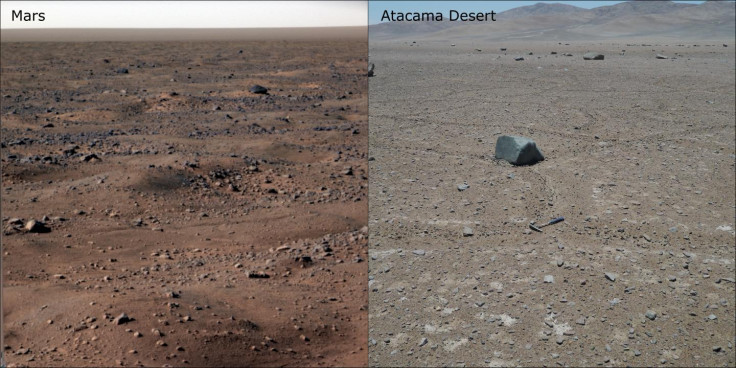Alien life on Mars could be possible, research says
Iron-rich structures found on rocks may not be fossils as believed previously.
Scientists and researchers are continuously looking for evidence of alien life on Mars, for decades. The research involves several challenges and risks. However, a new study promises that search for life on the red planet could become easier by solving fossil mystery.
A report by the editorial staff of Engineering and Technology suggests that the findings of a research conducted by a team from the University of Edinburgh give a clearer picture of what the probes on Mars should go after. According to the study, the microscopic tubes and filaments that are often referred to as skeletons of tiny creatures might just be the residue formed after chemical reactions involving iron-rich minerals. Previous research claimed that these remains are the oldest fossils on Earth.
Astrobiologist and a leading researcher of the study Sean McMohan studied similar structures in the lab closely. As per the report, this knowledge can help researchers and probes to avoid analysing unnecessary data. McMohan has devoted himself in developing techniques to find answer to the burning question: Does life exists or existed on Mars?
For this study, he created these tiny fossils in the lab that are a near-to-accurate replica of "iron-rich structures commonly found in Mars-like rocks on Earth." Some of these remains are believed to be around four billion years old. Hence, they are considered a great aid in the study of life.
With the help of a mixture of iron-rich particles and alkaline liquids containing chemical silicate or carbonate, the complex structures were created. This process is referred to as chemical gardening and is a natural phenomenon. Such structures are commonly found on hydrothermal vents or fissures on the seafloor. Ever since the discovery, these structures have become an intriguing subject of scientists' explorations.

However, McMohan suggests that the structures alone may not be proof that these are fossils. A deeper study and more research are demanded in a better understanding of the phenomena.
"Chemical reactions like these have been studied for hundreds of years but they had not previously been shown to mimic these tiny iron-rich structures inside rocks. These results call for a re-examination of many ancient real-world examples to see if they are more likely to be fossils or non-biological mineral deposits," McMahon said as quoted by the publication.
© Copyright IBTimes 2025. All rights reserved.





















